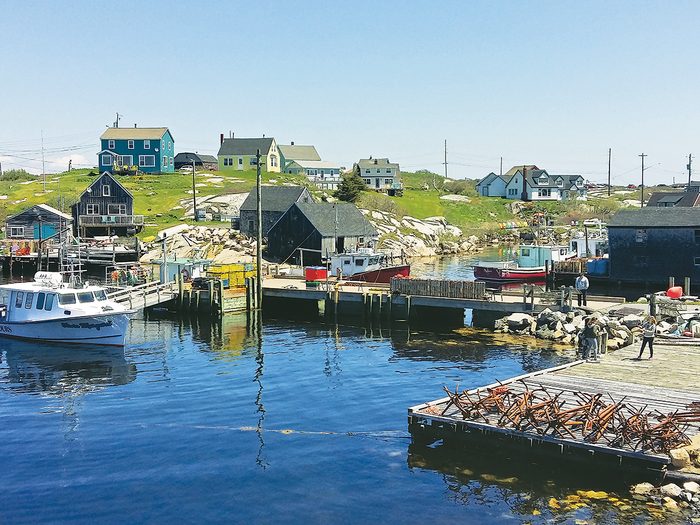
A sweet reunion
During the summer of 1967, just before I started Grade 9 in the neighbourhood of Rexdale, Toronto, a new kid moved in across the street. My friend, Bradley, the bad boy up the street was looking him over. I said, “His name is Paul from down the city.” Bradley, brandishing his fist, whispered, “Want me to welcome him to Rexdale?” I chuckled and said, “No, he’s okay, he only looks tough.” So, I had just saved Paul from a smart smack on the jaw.
Now, fast forward to the summer of 2019, Paul and I have kept in touch throughout the years and have maintained a friendship. So much so, that he and his lovely wife, Kathy, who both live in Dartmouth, N.S., had invited me to fly east to see the province. The first morning there, Paul suggested we take a walk along the Halifax Waterfront. “It’s only a 15-minute drive across the McDonald Bridge or a ten-minute ferry ride,” he said. We took the ferry across the harbour and found ourselves in a quaint street mall lined with shops, restaurants and museums. Sailing boats of all sorts were tied to the wooden docks and the wide boardwalk lined the ocean, inviting you to stroll leisurely along for miles. It was further up in the Narrows in 1917 that the city was devastated by the Halifax Explosion caused by the collision of the Norwegian ship SS IMO and the French ship SS Mont-Blanc, laden with ammunition.
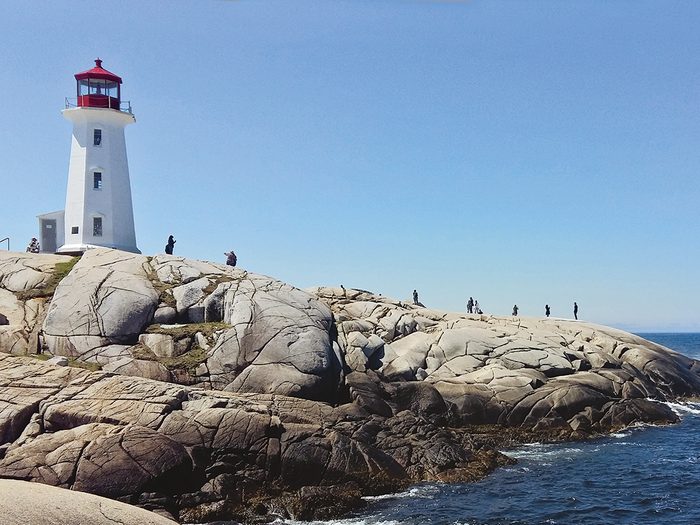
An iconic view
The next morning, we found ourselves driving out of Dartmouth on the No. 111 highway to the No. 333, towards Peggy’s Cove, which still remains an active lobster fishery to this day. Upon arrival, we parked the car and walked down the hill towards the ocean, where the famous lighthouse was built in 1915. After spending some time shopping and taking pictures, we followed the road up to the No. 103, the Fisherman’s Memorial Highway. It skirts along the eastern shore, taking travellers through forested countryside and small villages. An hour later, we pulled into Mahone Bay, which is a small town at the end of the inlet that is lined with colourful, wooden-clad buildings.
Read this heart-warming love letter to the Peggy’s Point lighthouse.
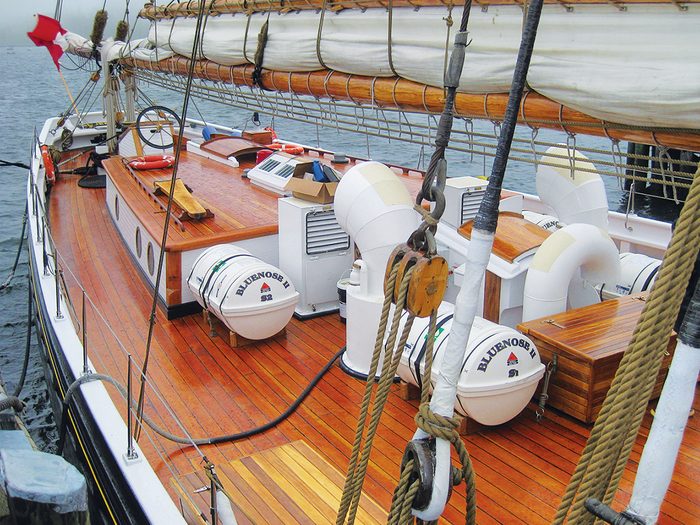
Glimpses of the Bluenose II
Driving south for five minutes more, we approached the storybook town of Lunenburg. Tourists are greeted by rows of multi-coloured wooden buildings that line the neat little streets. There are houses, various restaurants, B&Bs, small businesses and shops to browse through. The streets slope down to the water and the wharves. Luckily, the star of Lunenburg, the Bluenose II, was majestically resting there, tied to the dock. Its gangplank was lowered and the entry was blocked by a rope tied across it. I dearly wanted to get on that deck, just to say I was on the Bluenose. So, I looked around. Hardly a soul about and only a few youths on the ship. I boldly boarded the gangplank, slid under the rope and stepped down to the famous deck. I took a few paces and then found myself face to face with a lady who said they were not taking on any guests right now. I made some excuse, turned around and decided to buy a Bluenose ll t-shirt in the Bluenose gift shop.
Check out the historical places you need to visit in every province.
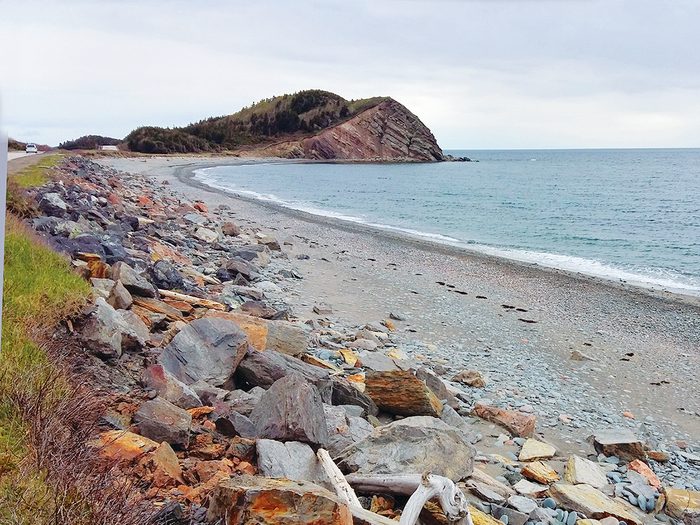
Diving into the history of Lunenburg
Lunenburg was initially an important off-shore fishery and ship building port. It was give its named in 1753 after Duke Lunenburg, who eventually became the King of Britain, King George ll. The Bluenose I was built here in 1921 and the Bluenose ll in 1963. In 1962, the ship Bounty was built here for the MGM movie, Mutiny on the Bounty. In addition to its storied history, the town also boasts Canada’s second-largest fish canning plant and is now a UNESCO World Heritage site because it is preserved as a period British town.
A big tour was planned ahead of us the following day: the Cabot Trail. We took the No. 102 highway northeast out of Dartmouth, to the No. 104 to Cape Breton Island and the town of Sydney; a four-and-a-half hour drive. Sydney has a waterfront boardwalk as well. The hotel we first stayed at was our jumping off point and we figured we could drive the trail tour the next day and be back at the hotel for the night.
These 10 great day trips from Halifax are worth adding to your bucket list.
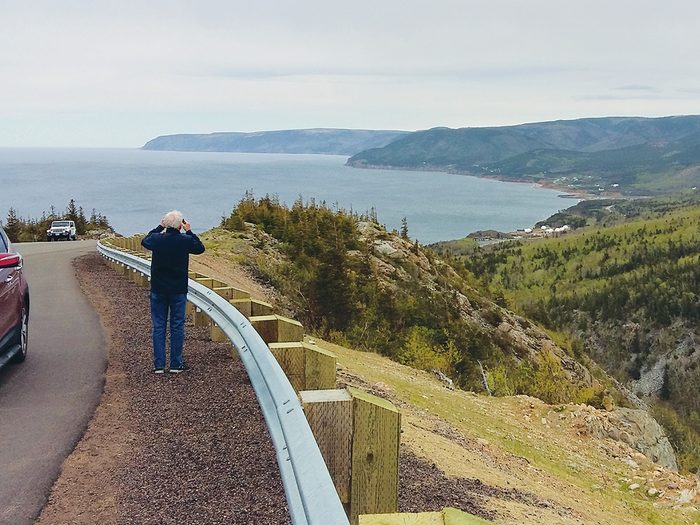
Careful on the rocks!
We started on the Trans-Canada No. 105, then to the No. 30, which took us around the northern point of the island. It is a narrow winding highway that took us up and down the mountainside. Something to note, for future travellers, is that you must be careful, especially if the roads are wet. Following the coastline, we took in the sight of the rocky cliffs meeting the ocean—spectacular scenery! There are lookout areas beside the highway, where tourists can stop and take full advantage of the breathtaking views. Hilly vistas and wooded arms stretch for miles out to the sea and there are also marked trails for hikers to use. For those spending more time, there are B&Bs, motels and parks for camping. Even with a few short hikes, we made the circuit in one day and returned to our hotel in Sydney.
On my flight back home to Ottawa, I had a bird’s-eye view of the entire province. What I once thought was flat and more open, with an agricultural landscape, was much more hilly, covered with trees and dotted with numerous small lakes, similar to the Canadian Shield in Ontario. My week-long holiday there was well spent, as I have now seen a good chunk of Nova Scotia. I had previously visited P.E.I. and New Brunswick a few years ago, and completed a road trip in 1972 from Toronto to Vancouver and Victoria. So I can safely say I’ve visited Canada from sea to sea.
Next, check out what it’s like to travel through time on Nova Scotia’s Evangeline Trail.